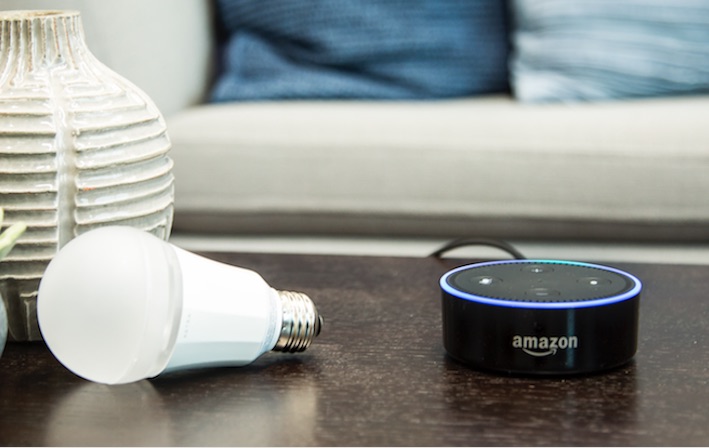
LED efficiency and a few key smart controls might have been the biggest innovations in consumer lighting in recent years, but innovations in the commercial space can take things a whole lot further. Offering high-efficiency RGB customization and constant self-checks to maintain a cohesive lighting scheme, Ketra’s bulbs have begun to reshape modern offices. Now, the LED lights have launched smart home capabilities and are compatible with Amazon Alexa, Google Home, Crestron, and Lutron.
All this functionality doesn’t come cheap though, with each individual bulb costing as much as $100. But as homes and businesses alike begin to pay more heed to the importance of light, it seems as though Ketra is finding a larger customer base.
The Ketra lights claim to simulate sunlight, shifting in color throughout the day. Plus, thanks to the custom driver chip found in all Ketra lamps and luminaires, these products should stay true to its intended color and vibrancy throughout its lifetime.
While the customizable nature of Ketra’s LED bulbs is impressive and their ability to go from daylight to disco in a second is a fun feature, it’s the bulbs’ error-checking capability that really sets them apart from the competition. Ketra’s bulbs check their own light emissions six times a second to confirm that they are sending out the desired lighting tone and intensity.
That is an important backdrop feature for the ability to tweak lighting on the fly. The idea is that spaces can change their theme with a color change, rather than having multiple rooms for different purposes. A showroom Ketra uses to show off that function is a typical kitchen, that switches from morning breakfast to an evening party atmosphere with a change from white to blue and purple light.
While Ketra’s health claims about simulating the sun are a little less tangible (and not supported by government-backed health regulators) they are there as part of the marketing and are helping Ketra make big strides in the commercial sector. And now that Ketra offers smart home integrations, which means they can be controlled remotely or via voice, they made find their way into more living rooms and bedrooms, too.
Updated on February 21: Ketra is now compatible with smart home platforms including Amazon Alexa and Google Assistant.
Editors' Recommendations
- Daisy is an installation and repair company designed for your smart home
- How to create spooky Halloween effects with smart home lighting and sound
- Are smart lights bulbs worth it?
- TP Link launches budget-friendly smart light strips
- How to use smart ambient lighting



